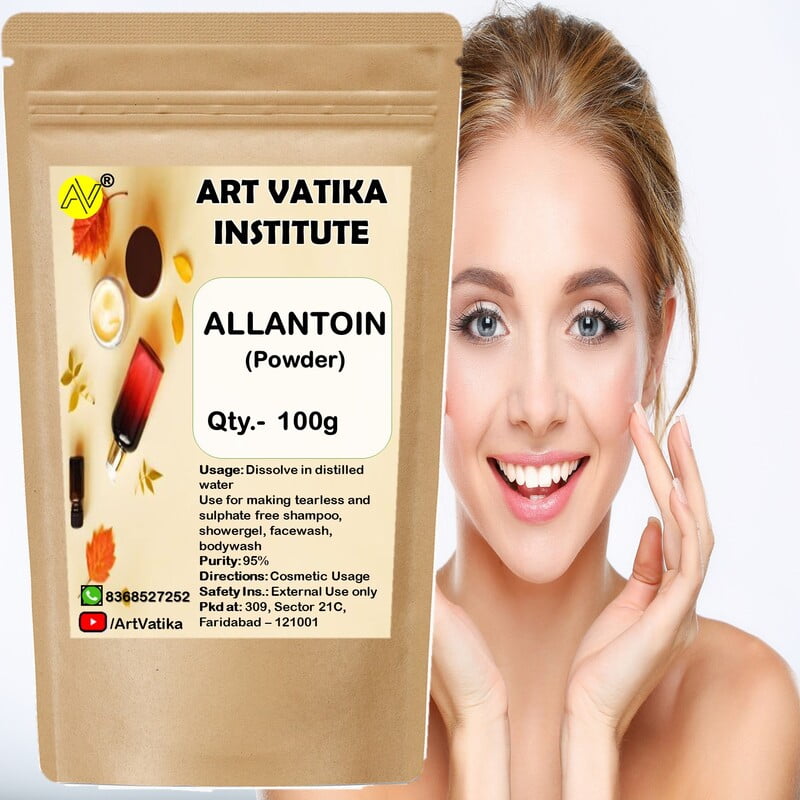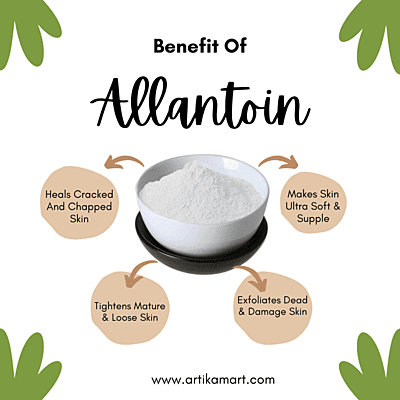



Allantoin
- Predominantly used for its skin moisturizing benefits, it is documented to heal severely itchy, dry, and flaky skin.
- It is mostly used to correct conditions like dandruff, seborrheic dermatitis, and psoriasis.
- It is wielded as an oral wound healing agent.
- It arrests transepidermal water loss and protects the skin.
- Additionally, it encourages natural exfoliation in the skin’s outer layer.
- It is known to increase cell turnover by synthesising collagen in the skin.
Description: Allantoin occurs naturally in the roots & leaves of the comfrey plant, but to satisfy market needs allantoin is produced synthetically but nature identical. Purity 99-100%. White crystalline powder, odorless. Synonyms: 5-ureidohydantoin, glyoxyl-diureide, 2,5-dioxo-4-imidazolidinyl-urea. Melting point 230°C (446°F). Water-soluble (Water soluble to just over 0.5%).
- Soothes and alleviates skin-irritations
- Has moisturizing and hydrating effects
- Often used to minimize pore size
- Has anti-aging properties making the skin look younger and rejuvenated
Use: Add to aqueous phase of formulas or after emulsification process. Use levels 0.2-2%. Can crystallize if added at hot temperatures and then rapidly cooled down. For external use only.
Applications: Lotions, creams, protective creams, sun care & after sun products, shampoos, scalp rinses, shower gels, lip & baby care products.
DETAILS



 : +91 9818304044
: +91 9818304044